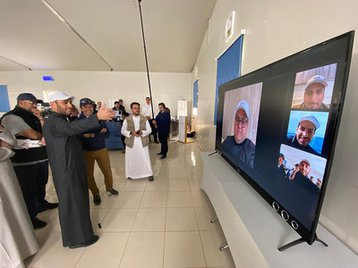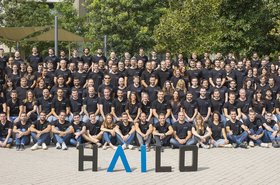Stratospheric Platforms has conducted a successful 5G connectivity trial from high-altitude in Saudi Arabia.
The UK High Altitude Pseudo Satellite (HAPS) firm this week announced a successful demonstration of 5G broadband connectivity between a "stratospheric 5G mast" flying at 45,000 ft and a retail 5G smartphone.
The trial was run in collaboration with the Saudi Communications and Information Technology Commission (CITC) in the airspace above The Red Sea Project. Engineers connected to the local telecoms network, completing tests between a 5G base station, flying stratospheric antenna, and retail mobile devices. The test was able to project a 5G signal to an area of 450 square kilometers.
While the aim us to eventually use the antennae from high-altitude drones – or HAPS – for this trial SPL used a German-made, long-endurance Grob aircraft.
Richard Deakin, CEO of Stratospheric Platforms, said: "This is a momentous event for the global telecoms industry proving that a 5G telecoms mast flying near the top of the earth's atmosphere can deliver stable broadband 5G internet to serve mobile users with ubiquitous, high-speed internet, over vast areas. The trial has proved that 5G can be reliably beamed down from an airborne antenna and is indistinguishable from ground-based mobile networks.”
Cambridge-based Stratospheric Platforms Limited was founded in 2014. Deutsche Telekom became a major investor in 2016. SPL is developing a hydrogen-powered HAPS platform known as 'Stratomast.' The company said it will be able to fly for a week without refueling and cover an area of 15,000 square kilometers using one antenna.
The joint team established three-way video calls between the land-based test site, a mobile device operated from a boat, and a control site located 950 km away. Further land and heliborne tests demonstrated a user could stream 4K video to a mobile phone with an average latency of 1 millisecond above network speed. Signal strength trials, using a 5G enabled device moving at 100 km/h, proved full interoperability with ground-based masts and a consistent 'five bars' in known white spots.
CITC Governor, H.E. Dr. Mohammed Altamimi, commented: "the Kingdom of Saudi Arabia is at the cutting edge of technological innovation and our partnership with Stratospheric Platforms' with the support of the Red Sea Project and General Authority of Civil Aviation (GACA) has demonstrated how we can deliver 'always on,' ultra-fast broadband to areas without ground-based 5G masts."
The Red Sea Project aims to develop a tourism hotspot on the Saudi Arabian Red Sea coast. The first phase is expected to be completed by 2022 when 3,000 hotel rooms will be constructed along with an airport, marina, and recreation centers.
HAPS – whether they be airships, balloons, or fixed-wing drones – offer a way to provide connectivity to rural and unconnected areas without the upfront costs of cell towers or satellites or the need for specialist receivers. Google/Alphabet's now-defunct high altitude balloon unit Project Loon was probably the most famous example, but a number of companies are looking to develop a successful platform in the space.
The likes of SoftBank, BAE, and Airbus are in various stages of testing to deploy large solar-and-battery-powered HAPS platforms that are able to fly remotely (with the eventual aim to fly autonomously), hold station in a fixed area, and beam either broadband or cellular signal below.







